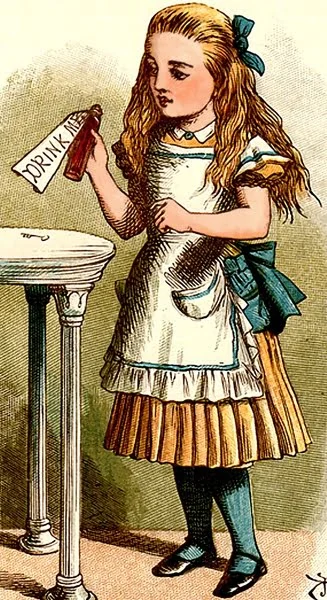 Although Charles Dodgson died over a century ago, his alter ego Lewis Carroll is still very much alive. Alive as the young in heart are forever alive. The longevity of Carroll’s Alice in Wonderland and Through the Looking Glass leads us to ask — is there greatness to humour, any importance to non-sense? What keeps a fictional world alive?
Although Charles Dodgson died over a century ago, his alter ego Lewis Carroll is still very much alive. Alive as the young in heart are forever alive. The longevity of Carroll’s Alice in Wonderland and Through the Looking Glass leads us to ask — is there greatness to humour, any importance to non-sense? What keeps a fictional world alive?
That’s one of the questions that will drive our seminar, The Curious Child of Lewis Carroll, at Toronto Pursuits 2024. We identify something as a Great Book partly by how it resonates over time through the lives of other writers, thinkers, and artists, not to mention just plain people. Think about every conversation or media reference to an Alice book you’ve heard – well, let’s go down that rabbit hole.
Into a world of falling, drinking, growing, losing. A world of tears, cats, mice, filling, shrinking, painting, croquet. Where vorpal swords go snicker-snack. Into where the logic bends as we choose our careful way – and something gets defined through making these choices – a vision, a twist – filling readers with the wonderment we need to keep appreciating and laughing at life. Quiddities to a benign.
“’It was much pleasanter at home,’ thought poor Alice, ‘when one wasn’t always growing larger and smaller, and being ordered about by mice and rabbits. I almost wish I hadn’t gone down that rabbit-hole—and yet—and yet—it’s rather curious, you know, this sort of life! I do wonder what can have happened to me! When I used to read fairy-tales, I fancied that kind of thing never happened, and now here I am in the middle of one! There ought to be a book written about me, that there ought! And when I grow up, I’ll write one—but I’m grown up now,’ she added in a sorrowful tone; at least there’s no room to grow up any more here.’”
Curious, the word at the centre of it all. Curiosity is the essence of us, it is awareness asking why of life. Novelty, complexity, uncertainty, uncomfortable conflict in a child’s eye of innocence and investigation — these keep us responding to our world and to art; they’re definitely part of what keeps Lewis Carroll’s work in our consciousness. Few other works of literature engage us at so primary a level.
Like calls to like. Creativity, playfulness, humour, and the unexpected in art foster growth and room for the new in our lives. Exploring the riches of Carroll’s words, his unique logic and imaginative worlds, will be the focus of our seminar this summer in Toronto. Visualizations of those words enrich our attention too, more art drawing us deeper into archetypal territories.

From the beginning, visual art was part of the rich world Carroll was creating; he initially included his own sketches of Alice when sharing the story with friends. When he decided to publish for a wider audience, Carroll didn’t want just any children’s illustrator, instead holding out for Sir John Tenniel, better known at the time for his political artwork in Punch. The iconic images Tenniel created have passed into public domain now, sitting alongside Carroll’s words as essentially part of the story for many readers.
Or do you see the classic Arthur Rackham illustrations in your mind’s eye? Or Disney’s demure Alice? Just as there are translations of Alice’s adventures in over a hundred languages, so there are scores of visualizations of her world by minds as varied as Max Ernst, Salvador Dalí, or the contemporary Japanese artist Yayoi Kusama.
Surveying this diversity of artistic response, we appreciate anew the generative power of Alice in Wonderland and Lewis Carroll’s work — the persistence of his images and characters, how they resonate with and spark other creative minds and linger in our own. It’s easy to think that Carroll’s work was meant to appeal mainly for children. But don’t fall into that trap! Revisiting Lewis Carroll offers adults a chance to reimagine answers to some of life’s essential conundrums while refreshing the springs of our curiosity.
You may think you’ve visited Wonderland before, but each time you enter, you create it anew. Whether that’s rereading the original, or being transported by the imagination of another, you become aware that your perspective, like Alice’s, is always changing. Be that curious child!
“When I became a man I put away childish things, including the fear of childishness and the desire to be very grown up.”
— C.S. Lewis


